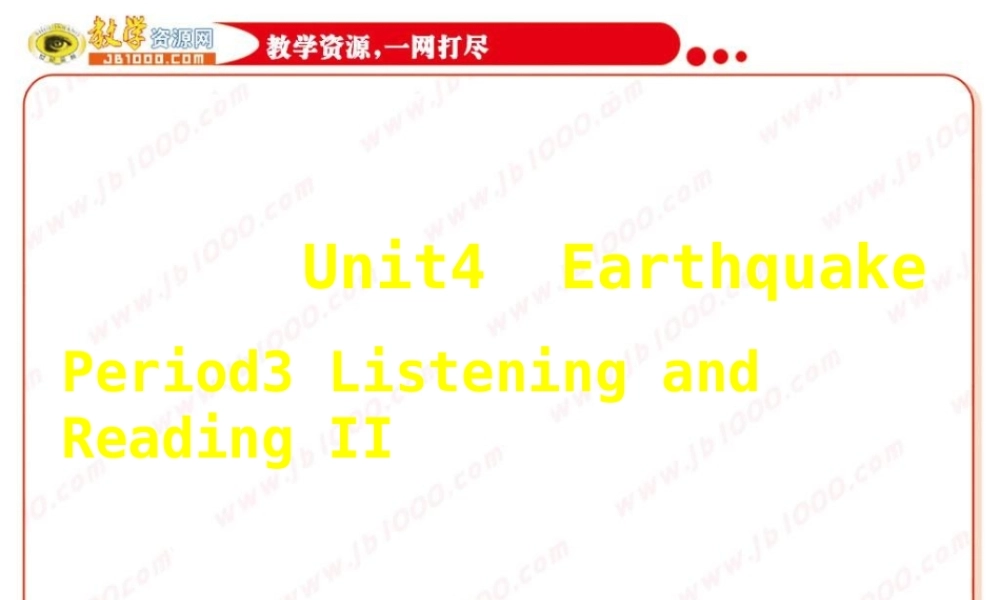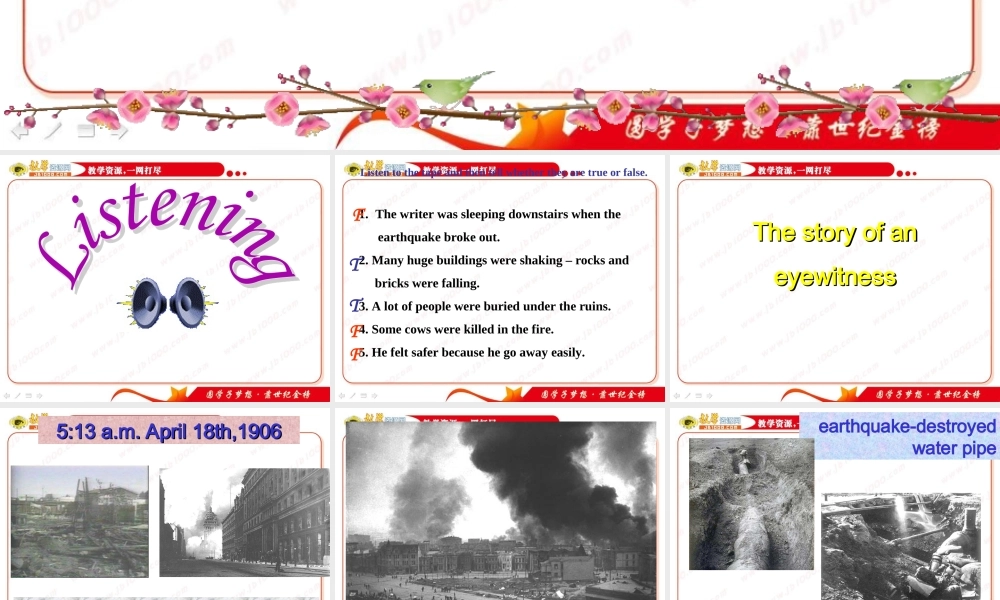Unit4 EarthquakePeriod3 Listening and Reading II1. The writer was sleeping downstairs when the earthquake broke out.2. Many huge buildings were shaking – rocks and bricks were falling.3. A lot of people were buried under the ruins.4. Some cows were killed in the fire.5. He felt safer because he go away easily.Listen to the tape and then tell whether they are true or false.FTTFFThe story of an The story of an eyewitnesseyewitness5:13 5:13 a.m. April 18th,1906a.m. April 18th,1906fire around the Call Buildingfire around the Call Buildingearthquake-destroyed water pipebroken water pipesbroken water pipesDreadful Dreadful earthquake earthquake damagedamagein Chinatownin Chinatownthe destroyed churchdamaged warehouserefugees fleeing along the Streetrefugees fleeing along the StreetThe Army later provided tents for refugeesThe Army later provided tents for refugees..poorly- built shelters250,000 people250,000 peoplelost their homeslost their homes700 people700 people lost their liveslost their lives(II)Workbook Page65Read the passage and finish the following exercises.1.Write an adjective to describe how the author felt about the earthquake and what it did.Why did you choose this word?Reading I----scanning (2m)Shocked. London is both greatly surprised and frightened by what he sees, so shocked is a good word to describe his feelings.2.Write an adjective to describe how the author felt about the people of during the earthquake.___________________Why did you choose these word?Sad.London knows that many families lost their loved ones and all their possessions.Read the first paragraph in this passage. Then go back and read again the first paragraph of the passage on page 26.Compare the ways both writers give you details about the earthquakes.Reading II----detailed reading (3m)• How do you know?1.Which writer shows more feeling about the earthquake?A. The writer of the Tangshan quake in 1976B. The writer of the San Francisco in 1906B. The writer of the San Francisco in 1906Because he is an eyewitness. He is also writing a personal report, not a history lesson.2. Both writers give similar details about_________________________ and___________________________.the people hurt by the quakethe things it destroyed3.Which one of the following statements is true?A. Both writers give details of big events before little events.B Both writers give details of little events before big events.C Neither writer gives details of big events before little events.C Neither writer gives details of big events before little events.3.Which one of the following statements is not true?A. Both writers saw the earthquake he wrote about.B. Only one writer saw the earthquake he wrote about.C. Neither writer saw the earthquake he wrote about.B1. Read the letter on page 30. Then finish exercises 2 and 3 on page 302. And do exercise on page 63. 1& 2 ( Using words and expressions)




